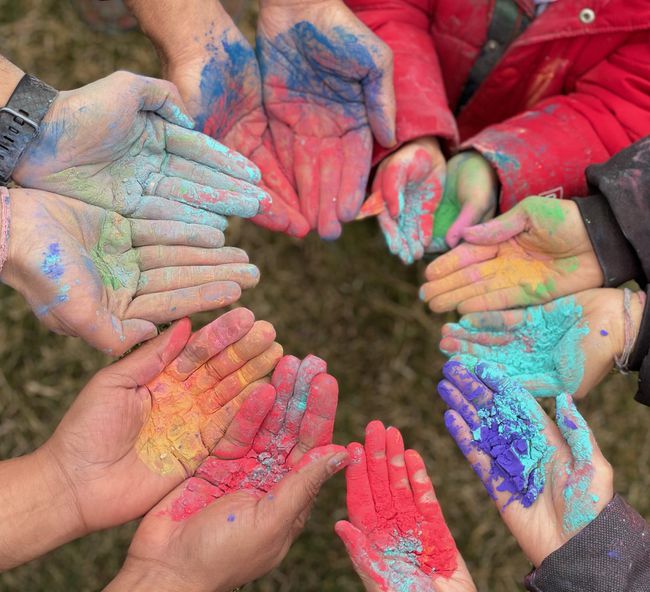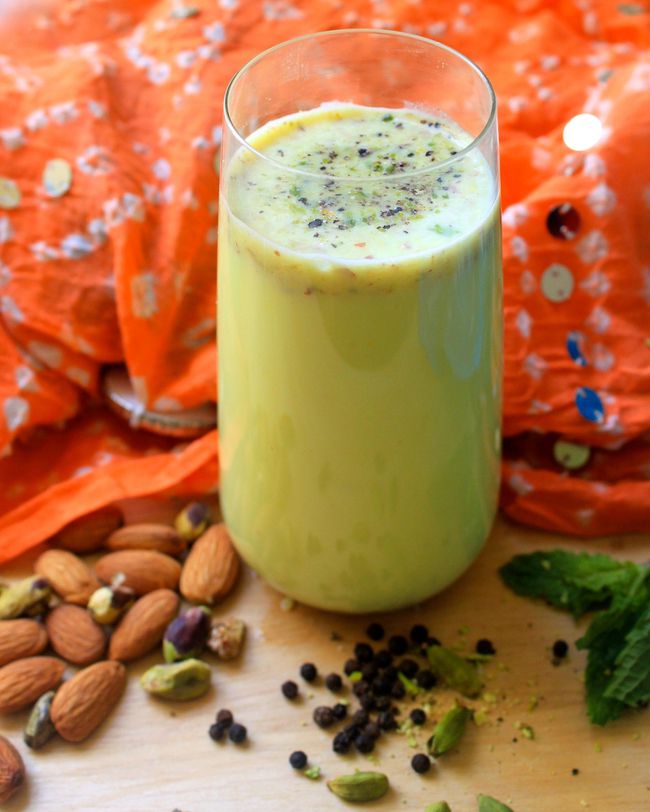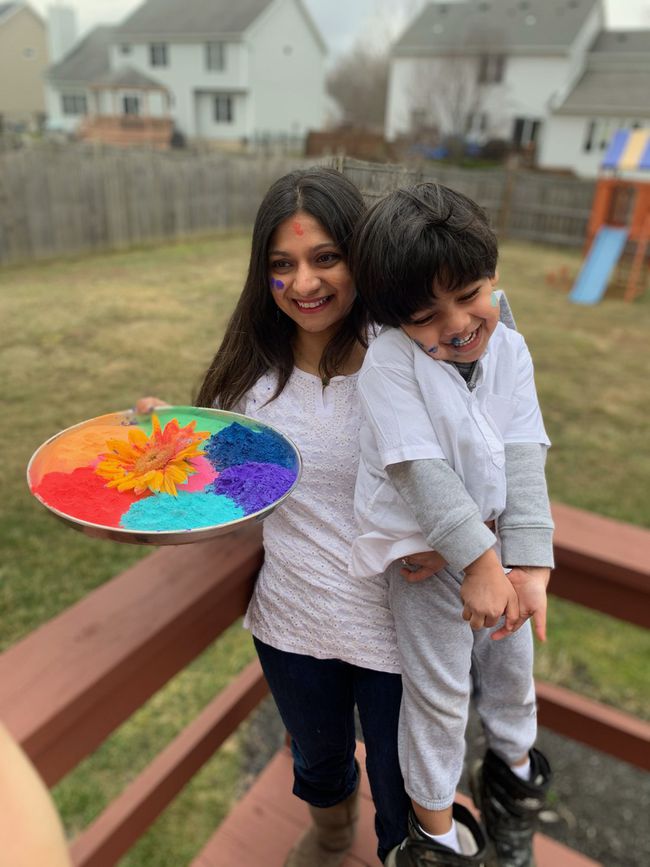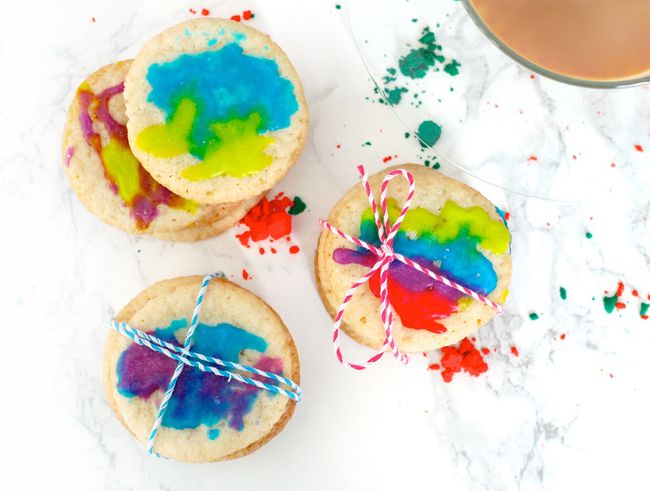In pre-pandemic life, you may have noticed or even taken part in "color runs" happening in your community at the start of spring, events filled with a rainbow of powders being thrown mid-air as participants ran to the finish line. This "color play" is a celebration of Holi!
Holi, the Festival of Colors, is celebrated all across India and Nepal. The holiday honors goodness, love, friendships, and the arrival of spring. Looking back on this past year, we have experienced some of the most challenging times we can remember and extreme divisiveness. Holi 2022 presents not only an opportunity to come together and connect but also to learn about South Asian cultures in a fun way. Plus, who doesn't like playing with colors?
Celebrating Holi helps kids gain self-confidence about their own stories, and cultures, and develop empathy and understanding of others. This year, take the chance to learn about the significance of Holi as a family, then plan your own joyous color-filled activities right at home. Here's how to explain the holiday to kids and celebrate.
- RELATED: Ways to Have a Safer Spring Break 2021: How to Travel and Where to Go
What Is Holi and When Is It?
While the roots of Holi date back to Hinduism, the tradition of color play is inclusive of all religions, cultures, and gender identities. It provides an opportunity for people to come together and celebrate all the good that life has to offer. Holi happens on the last full moon day and will change slightly on the exact date. In 2022 it takes place on March 18 but in other years it can occur in late February. Choti Holi, or Small Holi, is the night before the main event.

The Rituals of Holi
Several folk tales are associated with Holi and the origin of the holiday's major rituals. Here are how the Holi holiday is celebrated and the popular stories behind each key aspect of it:
The Bonfire Ritual: Holika and Prahalad
On the eve of Holi, a giant bonfire called Holika Dahan is constructed to signify the burning of all negativity. People gather around the fire to offer stalks from harvest and twigs as a symbol of ridding oneself of all negative thoughts.
As the story behind the bonfire goes, the Demon King Hiranyakashyap demanded his entire kingdom to worship him in place of God. But his son, Prahlad, refused to stop worshiping Hindu God Lord Vishnu. The King's sister, Holika, was immune to fire, and the King asked his sister to enter a bonfire with Prahlad. Since Holika used her powers for evil, she burned, and Prahlad was saved by Lord Vishnu.
The Color Play Ritual: Krishna and Radha
The next day is Holi, where people gather for color play. Gulaal (in Hindi) or Abeer (in Bengali) are colored powders traditionally derived from flowers, spices, and plants. Pink came from roses, yellow came from turmeric, green came from leaves, orange came from marigolds, and blue came from indigo.
The origin of the color play ritual comes from the story of Krishna. He was the life of his village and an incarnation of Hindu God Lord Vishnu. He was mischievous and loving. Krishna and his best friend Radha danced and played together all the time with their friends. As the legend goes, Radha once teased Krishna, and he retaliated by smearing colors all over her. Pretty soon the entire village joined in and thus started the tradition of color play for Holi.

Celebrating the Arrival of Spring
The Indian subcontinent used to be primarily an agriculture driven economy. Most harvest seasons are celebrated with a lot of enthusiasm to welcome crops and sow new seeds. The Holi holiday marks the change of season from winter to spring and the harvest of winter crops such as barley, wheat, and chickpea.
In celebration of spring, front yards are decorated with flowers and Rangoli, which is traditional floor art. Gujiyas, or fried dough pastry filled with nuts and honey, and Thandai, a cold milk drink with powdered nuts and spices (pictured above), are traditional Holi treats served as well.
How to Celebrate Holi with Kids
Celebrating Holi from home during the pandemic doesn't have to be any less fun than your average year. Kids love colors and Holi is a perfect holiday to immerse in a new cultural experience. Here are a few fun activities to do together:
- RELATED: 8 Spring Activities for Preschoolers
Make Your Own "Holi Color" Shirt
Traditionally, people wear white clothes for Holi. This provides a blank canvas for the color play. For this craft, cut out white craft paper in the shape of a shirt. Grab some paint brushes and paint—washable paint is preferred as this will get messy! Splatter the paint all over the paper shirt for your very own "Holi color" shirt keepsake.
Plan a Color Play Party
Mix 1 cup of cornstarch with 1/3 cup water and a few drops of your favorite plant-derived food color. Mix it up, let it dry, and break it up into powder. Repeat for as many colors as you would like. Have a safe color play party as a family or with your pandemic pod while screaming, “Holi Hai, it’s Holi!” Tune in to this Bollywood playlist for some Holi themed songs, as well.

Create Your Own Rangoli
Rangoli’s are traditional floor arts created using colored sand and flowers during celebrations. Grab your chalks and create your own Rangoli in the driveway or on the sidewalks. Here is a free Rangoli printable you can use to color in.

Make Colorful Sugar Cookies
Bake sugar cookies and decorate with colorful icing. Sprinkle some funfetti to create your own rainbow cookies.
Plant Some Seeds
It's the arrival of spring! Plant some wildflowers in a pot to celebrate the season and discuss seasonal produce in your area. Kids can be responsible for watering and taking care of their plants.
Akruti Babaria is an immigrant mompreneur and founder of Kulture Khazana. A trained Indian classical dancer, Akruti connects families with South Asian stories through Kulture Khazana.
